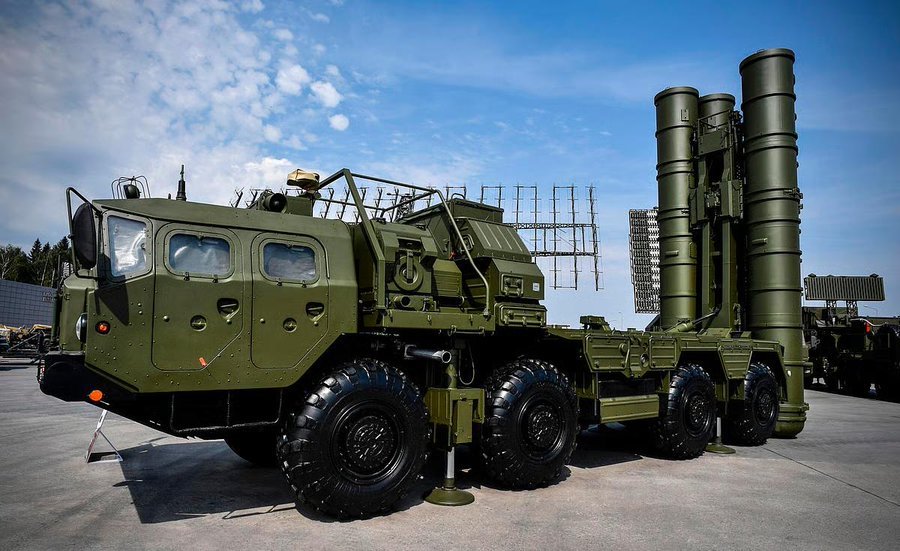Russia-India Defence Partnership Enters New Phase
India and Russia are moving ahead to fast-track the delivery of additional S-400 surface-to-air missile systems, a critical element of New Delhi’s defence preparedness. Negotiations are currently underway to ensure the pending units, part of a 2018 contract, reach India within the next two years. According to official sources, one of the two remaining regiments is expected to arrive by 2026 and the final by 2027.
The agreement for five units, valued at ₹39,000 crore, was signed in 2018 as a response to growing security concerns from both Pakistan and China. Three units have already been delivered and deployed between 2021 and 2023, while the delays in the remaining consignments have been raised by Defence Minister Rajnath Singh during his interactions with Russian officials.
A “Game-Changer” in India’s Recent Conflict
The S-400 gained prominence during its operational debut in India’s conflict with Pakistan earlier this year. Deployed under “Operation Sindoor,” the system acted as a formidable shield, neutralising incoming threats. Despite multiple projectiles being launched by Pakistan, its air and missile systems failed to penetrate the Russian-built network.
Air Chief Marshal A.P. Singh described the S-400 as a “game-changer” that safeguarded India’s skies when it mattered most. Military experts believe the system has significantly tilted the regional balance in India’s favour, deterring aggressive manoeuvres from adversaries.
Capabilities of the S-400 System
The S-400 Triumf is considered one of the most advanced air defence systems in the world. Capable of detecting hostile activity up to 600 kilometres away, the system can simultaneously track over 100 targets. With a firing range of 400 kilometres, it can engage and destroy a wide array of aerial threats, including fighter aircraft, bombers, drones, cruise missiles, and even ballistic missiles.
Each S-400 regiment consists of eight launch vehicles, each equipped with four missile tubes. This structure allows it to provide a multi-directional defence umbrella, making it nearly impenetrable in combat scenarios.
Deployment Across Strategic Locations
India has already deployed the first three regiments of the S-400 in key regions. One unit has been stationed at Adampur in Punjab to counter threats from Pakistan, while others are positioned in the Eastern and Western sectors to cover sensitive zones along the Chinese border. This placement ensures a broad spectrum of protection over India’s northern and western frontiers.
With the arrival of the remaining units, India’s coverage will be complete, providing a near-continuous shield across the country’s most vulnerable air corridors.
Sudarshan Chakra: India’s Next Big Defence Project
Beyond completing the original contract, India is exploring the acquisition of more S-400 systems to form the backbone of its “Sudarshan Chakra” initiative. This project, highlighted by Prime Minister Narendra Modi during his Independence Day address, aims to integrate multilayered defence mechanisms, including advanced surveillance networks and cyber security elements, to provide a comprehensive aerial shield over the country.
The project has drawn comparisons with Israel’s Iron Dome, though India’s version will be designed to protect against a wider variety of threats, including high-speed missiles and advanced drone swarms.
Russia’s Commitment to Defence Cooperation
Speaking to Russian media outlet TASS, Dmitry Shugayev, head of Russia’s Federal Service for Military-Technical Cooperation, confirmed ongoing discussions for expanding cooperation. “India already has our S-400 system. There is potential to expand our cooperation in this area as well. That means new deliveries. Now, we are in the negotiation stage,” he stated.
The strengthening of the defence relationship comes at a time when India and Russia have displayed close ties on multiple fronts. Moscow has acknowledged India’s independent foreign policy stance, especially New Delhi’s decision to continue sourcing energy supplies from Russia despite Western pressure.
Strategic Implications
The arrival of the remaining S-400 systems and possible additional orders will further consolidate India’s defence posture in South Asia. It signals New Delhi’s determination to maintain technological superiority over Pakistan and to counter China’s expanding military footprint.
The combination of Russian military technology and India’s indigenous projects under the Sudarshan Chakra framework is expected to create one of the world’s most robust air defence systems. This move underscores India’s long-term vision of building a self-reliant yet globally integrated security architecture.








